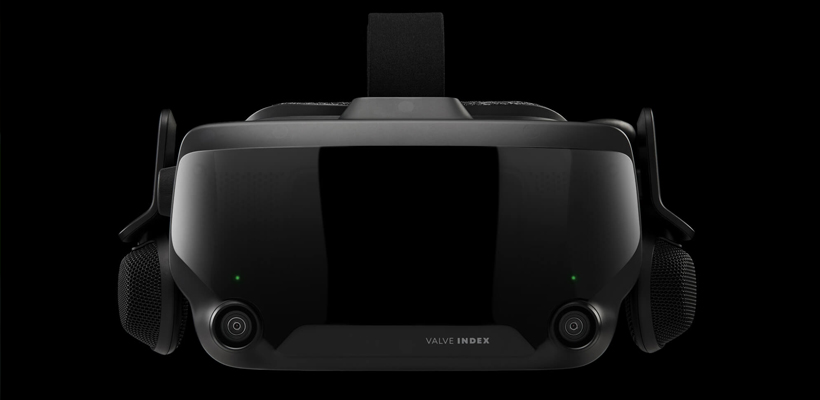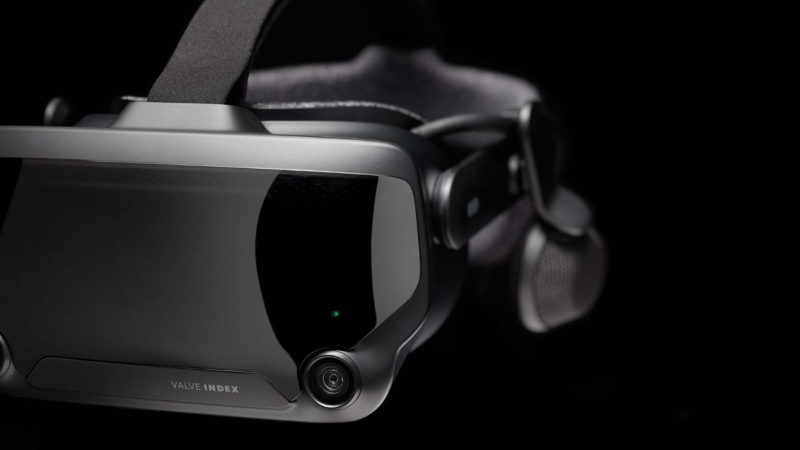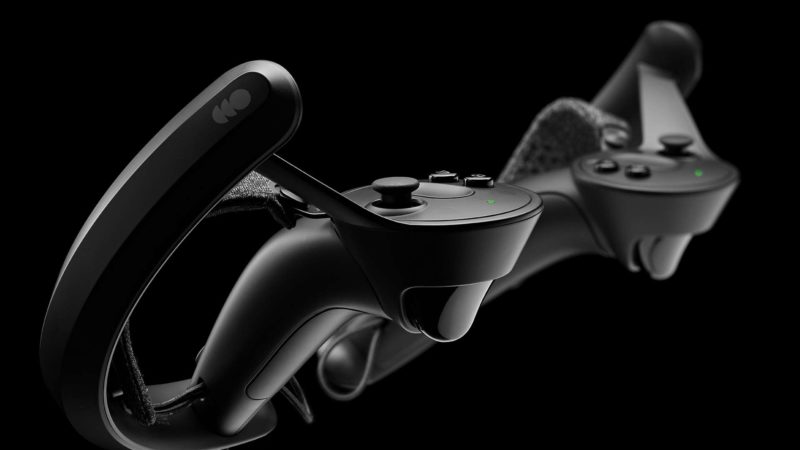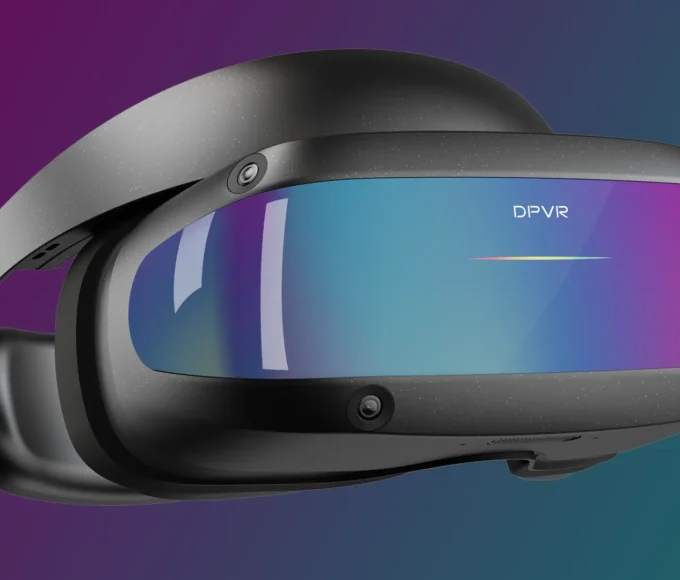We were excited when we first received the specs of the Valve Index, and this convinced me it was finally to upgrade to a new head mounted display and not just to pre-order the Index Controllers. We have now had over the week and sixty plus hours testing out the Index and it’s controllers – so, has the upgrade been worth it?
As the HTC Vive has been my go to headset this is going to be main comparison for this article, but please note I have also had experience with the Oculus Rift CV.1, PlayStation VR and Windows Mixed Reality. Also as we already own the Vive and had lighthouses, for the time being we went for the bundle without the 2.0 base stations, so these will not be covered in this review.
Head Mounted Display (HMD)
Quality
As soon as we opened the box we could see that the headset was made to be strong and sturdy – it just looked like the high-end product it is supposed to be. Every part of the HMD seems to be made out of high-quality plastic with a high quality finish to it all.
From the first time you pick up the HMD you can feel the weight of the product, and my first concern was how will they manage the comfort. To my surprise they managed to make to it make it comfortable with the weight distribution on the head strap. They have gone with a halo head strap that is made of the previously mentioned solid plastic materials, with an additional support strap across the top of your head. Once it is on your head you can adjust how tight it will be to your head with the dial on the back. Meaning you can get the perfect comfort for each user.
For the face gasket they’ve used antimicrobial fabric, which for me is has been the most comfortable out of the box gasket – but it does have some downsides. One thing I liked is the fact the gasket is attached by magnets, so it’s easy to remove and in some cases it can be knocked off – but it never moves when you have it on your head. Now to downsides, there is only one included in the box and people have different size and shaped faces, so where it is comfortable or me, it may not be for everyone. Secondly where the fabric is comfortable it will start to soak in sweat, but the fact it can be removed it is easy to clean – but a more sweat resistant fabric might have been more useful.
The same fabric is also used around the back strap, but this is attached to the strap and cannot be removed. Which makes this much harder to clean compared to the gasket and will need some careful cleaning not to damage the HMD. One thing I really liked was they have included a soft cushion spacer for people with smaller heads that can be placed into the back strap, it’s great to see a company taking this into consideration and providing this. However, one fantastic thing is this can be used for additional comfort for anyone.
Set-up
For us the set-up was straight forward, as we already had Steam VR installed and set-up for the Vive. All we needed to do was plug-in the power, USB and display port, open Steam VR and update the Index’s firmware and we were ready to go.
However, if you have not had a HMD with the base stations previously, you will need to install Steam VR, set-up your base stations, connect your headset and run the room set-up when prompted, and of course do any firmware updates. All of these are easy and quick to do, and didn’t cause any big delay or problems when we first installed the Vive.
Visuals
Valve have opted for dual 1440×1600 RGB LCD’s for their panels, which of course brings some positives and some negatives.
Let’s start with the positives, this brings with it fifty percent more sub-pixels you can achieve with OLED displays, which allows for much greater sharpness to the image. It also brings with it a larger fill-factor meaning that the screen door effect is vastly reduced, and where this is subjective I really didn’t see any screen door effect within the image.
With the increase in resolution on the displays compared to my HTC Vive, the image clarity was a huge step-up for me, and I really love how clear and smooth everything looks, and it still even does after the sixty plus hours we have had with it. When playing a text heavy games with inventories like Fallout 4 VR, the clarity in the text is much improved and so easy to read.
The next positive for me is the option to use 80, 90, 120 or even 144Hz refresh rate within the HMD, all easily swapped in Steam VR settings. Again it seems that telling the difference in Hz could be subjective as well, because, I seem to see the difference when playing games like Beat Saber, but you hear others say they don’t really see any benefits or difference so they stick the 90Hz. Mixing this with the improvements in the resolution and increased sub-pixels really makes the turning of the head seem so much smoother and natural in the games.
Then the final improvement is the increased FOV, moving from 90 degrees up to 120 degrees. Now this is all going to depend on the user on how wide this FOV gets, as this is increased using a dial on the side that will bring the lens closer to or further away from your face. In order to get the full effect of the FOV you need this dialed in as far as it goes, to the point the lens are touching your face – which is how I play. Therefore, this might not be an option if you wear glasses, meaning you might not get the whole benefit of the FOV increase, but, you will still get a wider field of view from this feature.
Now some negatives of this displays, the VR user base have become so used to the super-blacks you can achieve with OLED, but these are not possible with LCD displays. This means in dark games the colours can look a little washed out compared to before, and sometimes this becomes very noticeable – although, I found it does not really break any of the immersion. As I mentioned the text is so much more clear to read, but in some cases when against the darker backgrounds you will still suffer from the ever-present god rays.
Now where I do sometimes miss those super-blacks, I much prefer the better resolution and image clarity from the larger sub-pixel amount. So, this is something I will just need to take into account and I’m sure I will get used to the black levels the more I use the headset.
Audio
When we first found out the Valve Index was not going to use headphones that press against your ear, and instead they were bringing speakers that float away from your ears; we wondered how will this work and not break the immersion? But, to our surprise this really works and provides the best audio experience we have had in VR. With the speakers floating from your ears this allows you to find your perfect sweet spot to get the full effect from the 3D audio.
Our main concern was interruptions from the outside world causing a break in the immersion, but the speakers and audio quality is so great it is hard to get distracted from the audio in the game – unless you are trying to be.
From our experience with the audio clarity, the way it keeps you immersed and gets the use of the 3D audio with you being able to find your own sweet spot, we think this is way all future VR headsets should approach audio.
The final element of the audio that seems a huge improvement over all the headsets we have used is the on-board microphone within the headset. This is really clear to others that are playing online with you, and really does help you communicate clearly online.
Index Controllers
Quality
As with the HMD you could tell straight by looking at them in the box that the controllers are a premium build for the premium price. Everything about the build and plastic again seems solid, sturdy and to a premium finish. One thing I noticed as well is it has some of the best and most immersive haptic feedback out of all the different controllers I have used.
The Controller
This is something that has been in development for years, and it really has been worth the wait. This seems like the most natural controller for VR I have used, even if it’s full compatibility has not been added to games.
Firstly let’s go through the general layout of the controller. One thing that Valve have taken into account is the button placement and the Steam VR button placement is perfect. On the Vive wands it was so easy to catch that Steam VR button, and break the immersion of the experience as the menu pops up, but on these controllers it’s small and hard to catch by accident – which makes it perfect. You then have A and B buttons, an analogue and a track pad. The track pad may look like its only for vertical movement but it does also track horizontal movement as well. On the side of the controller you have the who halo type arcs, these are used for the lighthouses to track the controllers in your 3D environment, and I have had no issues with the controllers loosing tracking.
Now there are reports around the internet of the analogue sticks having issues within the controllers, but we have not had any issues with ours yet. Yes, sometimes it will not make an audible click when pressing them in, but, they still function perfectly in the games.
Then we have the individual index tracking, and this is where the controllers take it to the next level. Each controller has a total of 87 sensors in them, with 32 being in the side panel alone. This allows for the algorithm to track each finger separately, because this is constantly reading your finger movement, but, sometimes this can mess up. However, if this happens just drum your fingers on the side and it will recalibrate the finger position and tracking will be perfect again.
The final touch I love about the controllers is the strap to keep them on your hands, and this is where the previous named ‘Knuckles’ came from – as the strap goes across you knuckles. The strap uses the same fabric as the HMD for comfort and once on your hand you just needs to pull the winch until it’s tight and comfortable enough to keep it strapped to your hand. It also comes with strap sizing options to allow for the ultimate fit for each persons hand. This allows you to release you hand from the controller but keeps it attached to your hand, and this makes everything seem so natural.
Here comes the only issue I have with the controllers at this moment, it seems devs have had the controllers for a while now, and not a lot have seemed to implement the controllers into them. Also, the ones who have it is more just a cosmetic thing and not really using the awesome tech to it’s full potential. But, when it does seem natural is when you have to throw object like in SUPERHOT, and just opening your grip lets go off the item. This also allows for complete social interaction and expressions in VR Chat as you can now express your feelings with full hand movement, rather than just the pre-programmed hand gestures.
Although, we are optimistic that as more and more games get support or release with support, the interaction with the finger tracking will soon be used to its full potential.
For the purposes of transparency, this review was created using hardware I have had to pay for. The use of purchased hardware does not affect my judgement of the product.







